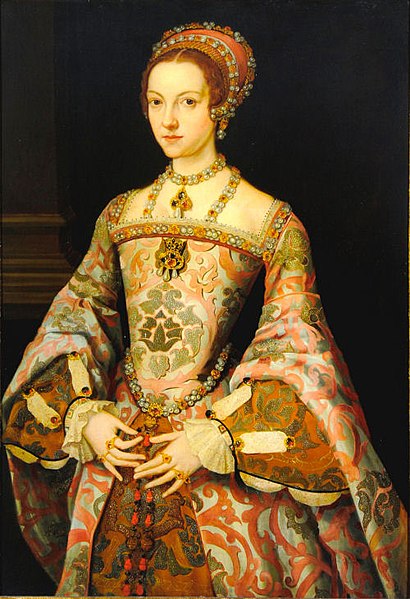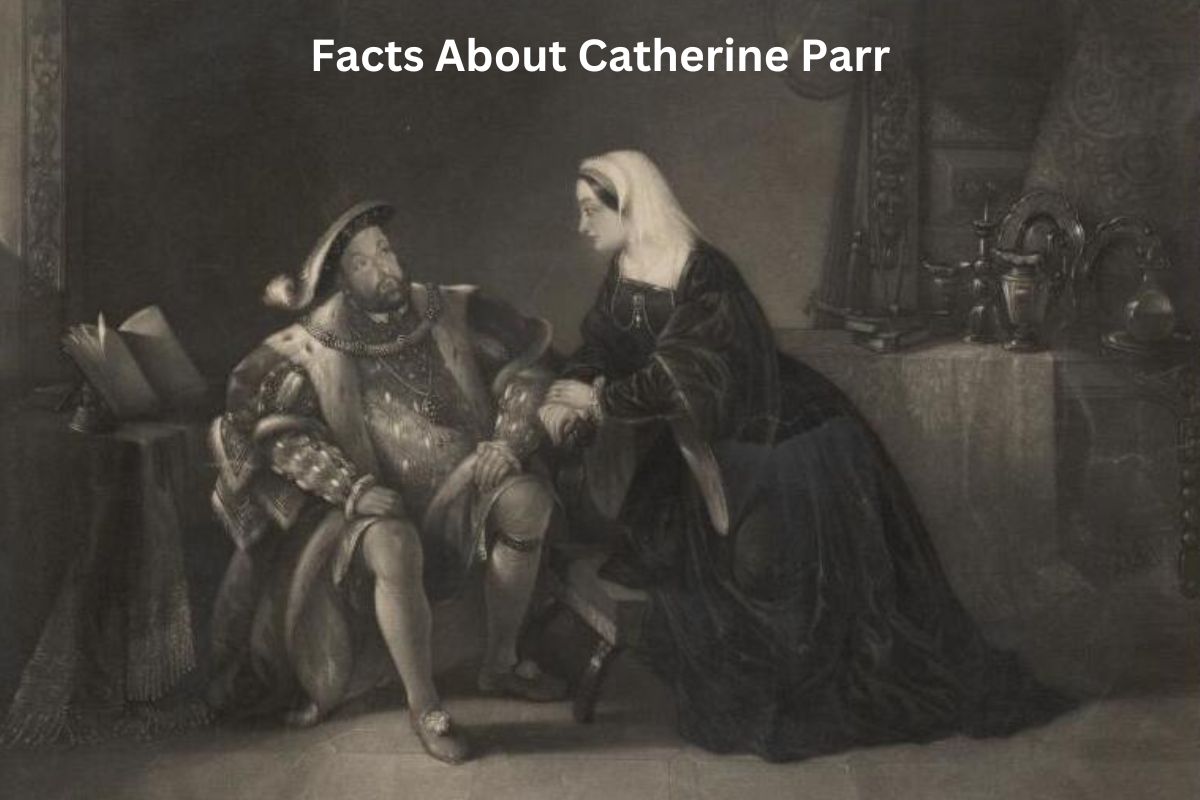Catherine Parr (1512-1548) was the sixth and final wife of King Henry VIII of England. Born into a noble family, she had two previous marriages before marrying Henry in 1543.
Catherine was a committed Protestant and played a significant role in promoting Protestantism during her time as queen. She authored a book, “Prayers or Meditations,” becoming the first English queen to publish her work.
After Henry’s death, she married Thomas Seymour and had a daughter, Mary. Catherine died in 1548, shortly after giving birth, leaving a lasting legacy as an influential queen consort and a key figure in the English Reformation.
Catherine Parr Facts
1. Born around 1512 in England
Catherine Parr was born around 1512 in England. She was born to Sir Thomas Parr and Maud Green, who were of noble lineage. Catherine came from a well-connected family, which later played a role in her marriages to influential men.

2. Married King Henry VIII in 1543, becoming his sixth wife
Catherine Parr’s marriage to King Henry VIII in 1543 marked a pivotal moment in her life. She became the sixth and final wife of the king, who was one of the most renowned monarchs in English history.
At the time of their marriage, Catherine was around 31 years old, and King Henry was in his mid-50s. This union was driven by both political and personal considerations.
Also Read: Facts About Catherine Howard
Catherine Parr’s marriage to Henry was significant because she played a crucial role in his later years. Her influence extended to matters of religion and education within the royal court, as she supported and promoted Protestantism and played a role in the upbringing and education of Henry’s children, including the future Queen Elizabeth I.
Her marriage to Henry was not without challenges, as she had to navigate the complexities of court politics during a tumultuous period in English history.
3. Previously married twice and widowed both times
Catherine Parr had a somewhat complex marital history before becoming queen. Her first marriage was to Sir Edward Burgh, who passed away in 1529.
After his death, Catherine married John Neville, 3rd Baron Latimer, in 1534. Her second husband, Baron Latimer, was significantly older than her, and their marriage lasted until his death in 1543.
Also Read: Henry the 8ths Wives
These marriages made Catherine a wealthy widow, which likely attracted the attention of King Henry VIII when he was looking for his next spouse.
4. Influential in promoting Protestantism during her time as queen
Catherine Parr is notable for her influence on King Henry VIII’s religious policies during her time as queen consort. At the time of her marriage to Henry in 1543, England was in the midst of the English Reformation, a period of religious upheaval.
Henry had already broken with the Catholic Church and established the Church of England. However, the religious landscape remained uncertain.
Also Read: Timeline of Anne Boleyn
Catherine was a committed Protestant and used her position to promote Protestantism at court. She engaged in theological discussions and debates, often defending Protestant principles.
Her influence was particularly important because Henry was known for his changing religious stance, and Catherine’s support for Protestantism helped solidify its position within the English court.
5. Published “Prayers or Meditations” in 1545, making her the first English queen to publish a book
Catherine Parr is historically significant as the first English queen to have her own work published. In 1545, she authored a book titled “Prayers or Meditations.”
This book was a compilation of her own religious writings, including prayers, reflections, and meditations. It reflected her strong faith and her commitment to Protestantism.
The publication of her book was a significant achievement, as it demonstrated her intellectual prowess and her willingness to engage with theological matters publicly. It also contributed to the broader dissemination of Protestant ideas in England during the 16th century.

6. Outlived King Henry VIII, who died in 1547
Unlike some of Henry VIII’s previous wives, Catherine Parr managed to outlive him. After years of marriages that often ended in divorce or execution, Catherine’s survival was a significant accomplishment. King Henry VIII passed away on January 28, 1547, leaving Catherine a widow once again.
7. Married Thomas Seymour after Henry’s death and had a daughter, Mary
Her survival ensured her continued influence in the royal court and allowed her to marry again. After Henry’s death, Catherine Parr married her fourth husband, Thomas Seymour, who was the brother of Jane Seymour, Henry’s third wife.
This marriage took place in secret, and it resulted in the birth of her only child, a daughter named Mary.
Catherine’s ability to navigate the complexities of royal marriages and politics without suffering the fate of some of her predecessors is a testament to her political acumen and adaptability.
8. Died in 1548 from puerperal fever shortly after giving birth
Catherine Parr’s life came to a tragic end in 1548. She died on September 5, 1548, at the age of 36. Her death occurred shortly after giving birth to her only child, a daughter named Mary.
Catherine Parr’s cause of death was most likely puerperal fever, a bacterial infection that women could contract after childbirth. This was a common and often fatal complication in the 16th century due to unsanitary conditions during childbirth.
Her death was a sorrowful event, and it left her family and the royal court in mourning, particularly since she had played an important role in the lives of Henry’s children and had left a lasting impact on the English Reformation.
9. Remembered for her role in educating Queen Elizabeth I
Catherine Parr is indeed remembered for her influential role in educating and nurturing Queen Elizabeth I, who would go on to become one of the most celebrated monarchs in English history.
After Catherine’s marriage to King Henry VIII, she became stepmother to Elizabeth, who was then just a young princess. Catherine Parr was not only caring but also deeply committed to Elizabeth’s education and well-being.
Catherine Parr’s own intellectual pursuits and interest in humanist learning played a significant role in Elizabeth’s education. She hired renowned tutors for Elizabeth, ensuring that she received a well-rounded education that included subjects such as languages, mathematics, theology, and the arts.
Catherine’s guidance and emphasis on the importance of education left a lasting impact on Elizabeth, who became known for her erudition and fluency in several languages.
10. Her legacy includes contributions to the English Reformation and literature
Catherine Parr’s legacy endures in the historical record, where she is remembered as a compassionate, intelligent, and influential figure in the Tudor period.
Her contributions to the English Reformation and literature, as well as her role as a stepmother and mentor to future monarchs, continue to be subjects of historical interest and study.
Her influence on the shaping of religious and educational developments during her time as queen consort continues to be recognized and celebrated in the context of English history.
